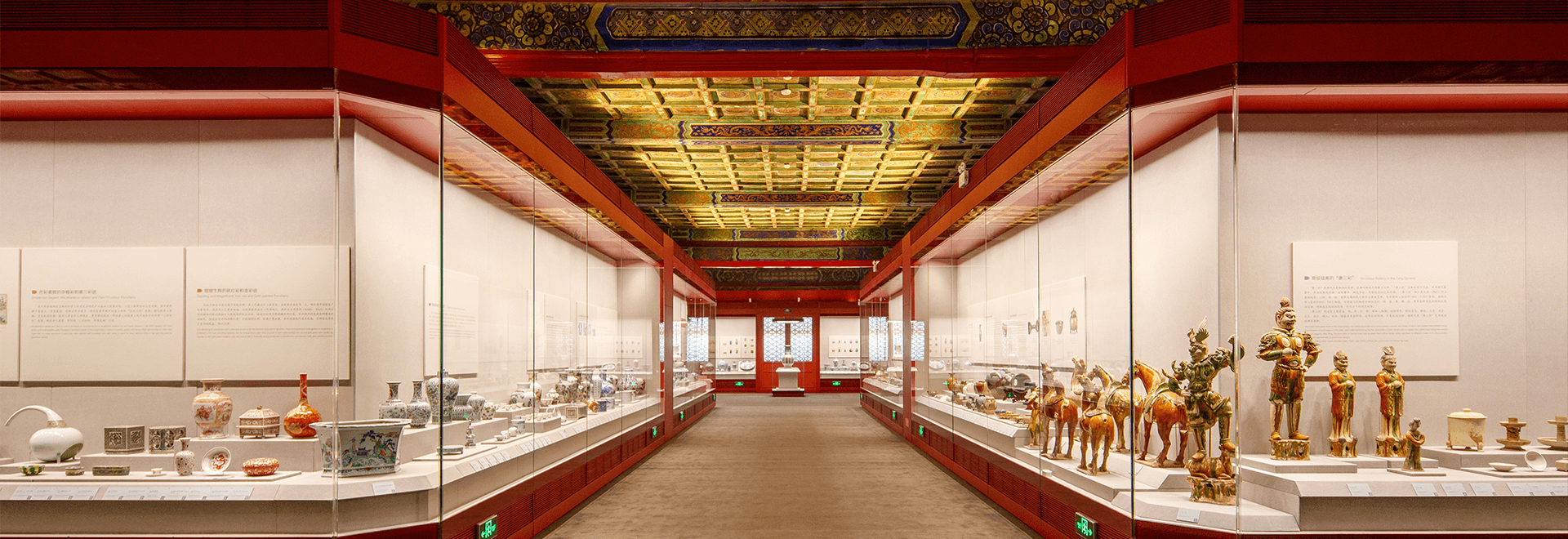“The Enduring Legacy of Craftsmanship: Exhibition Commemorating the 100th Anniversary of Luo Zhewen’s Birth” Opens at the Palace Museum
On January 16, 2025, an exhibition titled “The Enduring Legacy of Craftsmanship: Exhibition Commemorating the 100th Anniversary of Luo Zhewen’s Birth” opened at the Palace Museum. The exhibition is co-hosted by the China Foundation for Cultural Heritage Conservation (CFCHC) and the Palace Museum, organized by the Luo Zhewen Fund Management Committee of the CFCHC, and supported by the Chinese Cultural Relics Academy among other organizations.
The opening ceremony was attended by Wang Xudong, director of the Palace Museum, Zheng Xinmiao, former vice minister of culture and senior advisor to the Luo Zhewen Fund Management Committee of the CFCHC, Li Xiaojie, former vice minister of culture, former director of the National Cultural Heritage Administration (NCHA), and director of the CFCHC Advisory Committee, Bian Jinping, former deputy secretary-general of the Chinese People’s Political Consultative Conference (CPPCC) National Committee and vice chairman of the Committee for Learning and Cultural and Historical Data, Ma Zishu, former deputy director of the NCHA, Zhang Bai, former deputy Party secretary and deputy director of the NCHA and advisor to the CFCHC, Gu Yucai, former deputy Party secretary and deputy director of the NCHA, Liu Shuguang, former deputy director of the NCHA and president of the Chinese Museums Association, Song Xinchao, former deputy director of the NCHA and chairman of the Chinese National Committee for the International Council on Monuments and Sites (ICOMOS China), Huang Kezhong, former deputy director of the Chinese Cultural Relics Research Institute and senior engineer at the China Academy of Cultural Heritage, and Luo Yang, researcher at the Central Research Institute of Culture and History and son of Luo Zhewen. More than 120 representatives from the cultural heritage, architectural, and academic fields, along with media representatives attended the ceremony, which was presided over by Luo Xianliang, deputy Party secretary and deputy director of the Palace Museum.
Wang Yuegong, deputy director of the Palace Museum, delivered a welcome speech on behalf of the organizers, highlighting Luo Zhewen’s contributions to cultural heritage protection and his connections with the Palace Museum. Luo Yang delivered a speech and expressed his gratitude on behalf of the family. Huang Kezhong and Bian Jinping gave speeches reflecting on Luo Zhewen’s remarkable life and outstanding achievements, expressing their deep respect for his academic excellence and work ethic. Liang Gang, vice chairman and secretary-general of the CFCHC, delivered a speech on behalf of Liu Yuzhu, chairman of the CFCHC, highlighting Luo Zhewen’s vital role and profound influence in the field of cultural heritage protection, calling on all sectors to carry forward his legacy and protect China’s cultural heritage.
Following the opening ceremony, participants visited the exhibition. The exhibition, themed “The Enduring Legacy of Craftsmanship,” is divided into four sections: “Student of Liang Sicheng, From Aspiration to Achievement,” “Guardian of Cultural Relics, Protector of Ancient Architecture,” “Ambassador of the Great Wall, Inheritor of Its Legacy,” and “A Life Dedicated to the Nation, Revered by All.” It features 63 sets of artworks created by Chinese masters, national intangible cultural heritage inheritors, and renowned artists in honor of Luo’s birth centennial, including embroidery, jade carving, woodcarving, inner-painted art, and other traditional crafts. Also on display are Luo’s published works, precious manuscripts, cameras, measuring tapes and surveying tools, which represent Luo’s remarkable contributions to cultural heritage protection throughout his life.
The first section, “Student of Liang Sicheng, From Aspiration to Achievement”, details Luo’s educational journey from his early schooling to joining the Society for Research in Chinese Architecture, studying under renowned Chinese architect and scholar Liang Sicheng, and working at Tsinghua University. The second section, “Guardian of Cultural Relics, Protector of Ancient Architecture,” is the core of the exhibition, and offers a comprehensive look at Luo’s exceptional contributions to the preservation, restoration, and management of ancient architecture. The third section, “Ambassador of the Great Wall, Inheritor of Its Legacy,” focuses on Luo’s lifelong connection with the Great Wall. He dedicated his life to the protection of the Great Wall, conducted investigations along its length and actively promoted conservation work, earning him the title “the foremost protector of the Great Wall.” The fourth section, “A Life Dedicated to the Nation, Revered by All,” reviews Luo’s life experiences, displaying his major publications and documents, along with high praise from leaders and experts, demonstrating his esteemed reputation in academic and professional circles.
This exhibition commemorating the 100th anniversary of Luo Zhewen’s birth pays tribute to cultural heritage protection and its continued development. It provides a valuable opportunity for the public to gain a deeper understanding of Luo Zhewen and his contributions to cultural heritage protection. It is expected to spark widespread interest and deep reflection on the importance of cultural heritage protection, thus inspiring more people to join the efforts to protect cultural heritage and contribute to the enduring legacy of heritage preservation.
The exhibition is located at the exhibition hall of the Gate of Divine Prowess (Shenwu men) of the Palace Museum across two floors and will run from January 17 to March 9, 2025.
In addition, the Luo Zhewen Fund Management Committee of the CFCHC on Thursday organized a symposium commemorating the 100th anniversary of Luo Zhewen’s birth.

